Human Evolution
This note is about human evolution as a pragmatic as well as speculative prospect.
Topics and Issues
- Coevolution, superorganism, mutualism, Gaia, symbiosis and endosymbiosis, cyborg systems
- Evolution at multiple speeds (implications: infections disease as microorganisms evolve faster)
- Continuing evolution (implications: strange pressures, assisted survival with no reference to long-term fitness, selection for group properties)
Forms of Evolution
- biological
- societal, cultural, group
- language
Technology
The evolution of technology is often a metaphorical, analogical concept but some commentators are serious about this, with loud predictions too.
Kurzweil, Ray. The Singularity Is Near: When Humans Transcend Biology. New York: Viking, 2005.
Implications
Human ecological nich has not expanded in recent times, contrary to appearances. Today, a smaller proportion of humans leave in outlying environments that deviate from the mainstream, cold, hot, high, etc. Those that do, continue there with high resourse expenditure and in standardised ways.
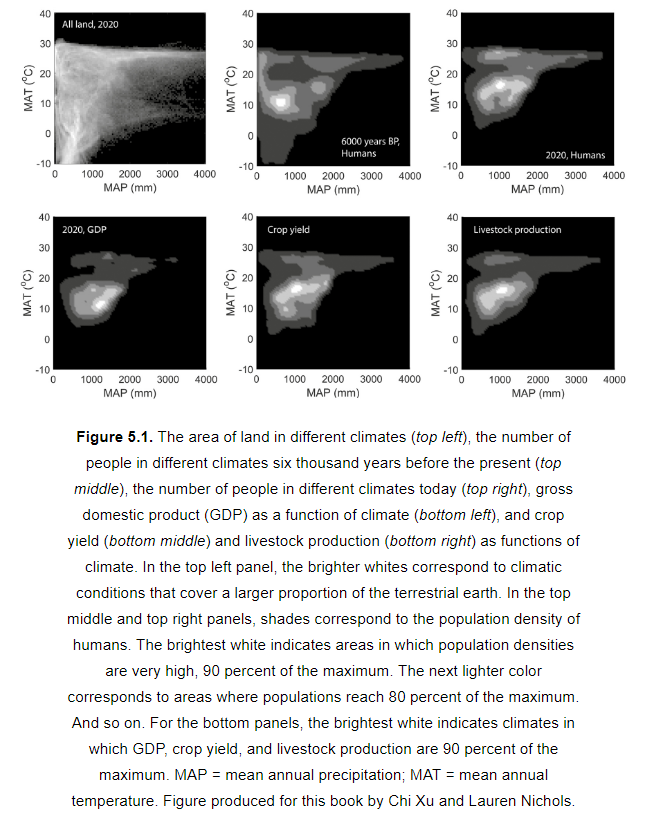
Dunn, Rob R. A Natural History of the Future: What the Laws of Biology Tell Us About the Destiny of the Human Species. New York: Basic Books, 2021.
Xu, Chi, Timothy A. Kohler, Timothy M. Lenton, Jens-Christian Svenning, and Marten Scheffer. “Future of the Human Climate Niche.” Proceedings of the National Academy of Sciences 117, no. 21 (2020): 11350–55. https://doi.org/10/ggtt87.
Health
One health, environmental health, coevolution
Bioethics
Hall, Melinda Gann. The Bioethics of Enhancement: Transhumanism, Disability, and Biopolitics. Lanham: Lexington Books, 2017.
Inequality
History
Hoffecker, John Frank. Modern Humans: Their African Origin and Global Dispersal. New York: Columbia University Press, 2017.
Future Prospects
Dror, Yehezkel. Steering Human Evolution: Eighteen Theses on Homo Sapiens Metamorphosis. London: Routledge, 2020.
Agar, Nicholas, and Robert A. Wilson. Humanity’s End: Why We Should Reject Radical Enhancement. Cambridge: MIT Press, 2010.
References
Brief overview:
Future evolution: from looks to brains and personality, how will humans change in the next 10,000 years? (theconversation.com) will almost certainly evolve,might not reproduce at all.)
Longer overview:
Roden, David. Posthuman Life: Philosophy at the Edge of the Human. Abdington: Routledge, 2015.
On human evolution:
Cochran, Gregory, and Henry Harpending. The 10,000 Year Explosion: How Civilization Accelerated Human Evolution. New York: Basic Books, 2009.
Newson, Lesley, and Peter J. Richerson. The Story of Us: A New Look at Human Evolution. New York: Oxford University Press, 2021.
On the relationship to the evolution of culture:
Laland, Kevin N., John Odling-Smee, and Sean Myles. ‘How Culture Shaped the Human Genome: Bringing Genetics and the Human Sciences Together’. Nature Reviews Genetics 11, no. 2 (2010): 137–48. https://doi.org/10/cr7cmf.
Mesoudi, Alex. ‘Cultural Evolution: A Review of Theory, Findings and Controversies’. Evolutionary Biology 43, no. 4 (2016): 481–97. https://doi.org/10/gfsp3b.
Mesoudi, Alex. Cultural Evolution: How Darwinian Theory Can Explain Human Culture and Synthesize the Social Sciences. Chicago: University of Chicago Press, 2011.
Ellis, Erle C., Peter J. Richerson, Alex Mesoudi, Jens-Christian Svenning, John Odling-Smee, and William R. Burnside. ‘Evolving the Human Niche’. Proceedings of the National Academy of Sciences 113, no. 31 (2016): E4436–E4436. https://doi.org/10/gfvhrp.
Speculative:
Robinson, Kim Stanley. Blue Mars. New York: Spectra, 1996.
Robinson, Kim Stanley. Green Mars. New York: Spectra, 1993.
Robinson, Kim Stanley. Red Mars. New York: Spectra, 1992.
Specifically on parallel evolution:
Robinson, Kim Stanley. Aurora. London: Orbit, 2015.
It’s Not Science Fiction | Bill McKibben | The New York Review of Books (nybooks.com)
Evolutionary context:
Clarke, Bruce. Gaian Systems: Lynn Margulis, Neocybernetics, and the End of the Anthropocene. Minneapolis: University of Minnesota Press, 2020.
On transhumanism and posthumanism:
Pilsch, Andrew. Transhumanism: Evolutionary Futurism and the Human Technologies of Utopia. Minneapolis: University of Minnesota Press, 2017.
Chu, Ted. Human Purpose and Transuman Potential: A Cosmic Vision for Our Future Evolution. San Rafael: Origin Press, 2014.
This is an argument that foundations of human morality lie in animal behaviour and have evolutionary origins. Not really surprising.
Christakis, Nicholas A. Blueprint: The Evolutionary Origins of a Good Society. New York: Little, Brown Spark, 2019.
Evolution as a Concept
For the background on evolution in general, see
Cf.
- emergence, generation
- Cognition
- extended evolutionary synthesis
- cell-based evolution
- systems biology
Symbiogenesis
Symbiotic Earth: How Lynn Margulis Rocked the Boat and Started a Scientific Revolution. Documentary, 2017.
Gilbert, Scott F., Jan Sapp, and Alfred I. Tauber. ‘A Symbiotic View of Life: We Have Never Been Individuals’. The Quarterly Review of Biology 87, no. 4 (2012): 325–41. https://doi.org/10/gfz64k.
Notions of Evolution
For an overview
Dawkins, Richard, and Yan Wong. The Ancestor’s Tale: A Pilgrimage to the Dawn of Life. 2nd ed. 2004. Reprint, New York: Mariner Books, 2016.
For a recent update
Quammen, David. The Tangled Tree: A Radical New History of Life. New York: Simon & Schuster, 2018.
Jablonka, Eva. “Information: Its Interpretation, Its Inheritance, and Its Sharing.” Philosophy of Science 69, no. 4 (2002): 578–605. https://doi.org/10/cwmsjs.
Jablonka, Eva, Marion J. Lamb, and Anna Zeligowski. Evolution in Four Dimensions: Genetic, Epigenetic, Behavioral, and Symbolic Variation in the History of Life. Revised. Cambridge, MA: MIT Press, 2014.
On humans, see the note on Human Evolution.
Evolution is not a gradual accumulations of features but rather a series of shift in a critical state system. Like adding grains of sand to the pile and sometimes setting off small or large avalanches.
Bak, Per. How Nature Works: The Science of Self-Organized Criticality. New York: Springer, 1996.
Nail, Thomas. Theory of the Earth. Stanford: Stanford University Press, 2021.
Cf. with the punctuated equilibrium theory.
Gould, Stephen Jay. The Structure of Evolutionary Theory. Cambridge, MaA: Belknap Press of Harvard University Press, 2002.
What Evolves?
Dawkins and modern synthesis = genes.
Bateson = organism + the environment the relationship between which is knowledge-based or mind-like.
Corning = living systems.
Corning, Peter A. ‘A Systems Theory of Biological Evolution’. Biosystems 214 (2022): 104630. https://doi.org/10/gsf5zb.
Nonliving and Interconnected Evolution
“Just as evolution is largely ecology writ large, so the organism seems to be ecology writ small. Clearly work needs to be done in this area, but perhaps individual organisms can be understood as spatially and temporally condensed versions of ecological processes.”
“Even before natural selection, the second law ‘selects’, from the kinetic, thermodynamic, and chemical options available, those systems best able to reduce gradients under given constraints.”
Schneider, Eric D., and Dorion Sagan. Into the Cool: Energy Flow, Thermodynamics, and Life. Chicago: University of Chicago Press, 2006.
For a review of this, see: Cool is not enough | Nature. The conclusion there is that the key ideas are no sufficiently supported. The second law of thermodynamics is necessary but not sufficient.
Life relies on the ability of matter to store information and to implement functional relationships, which allow organisms to maintain their form and execute purposeful behaviours that enhance their survival. Such complex order depends on the rules by which matter interacts.
Cultural Coevolution
Cf.
- Culture
- Interspecies
- behavioural interference
- interspecies culture
Marzluff, John, and Tony Angell. “Cultural Coevolution: How the Human Bond with Crows and Ravens Extends Theory and Raises New Questions.” Journal of Ecological Anthropology 9, no. 1 (2005): 69–75. https://doi.org/10/gf65ks.
Cornell, Heather N., John M. Marzluff, and Shannon Pecoraro. “Social Learning Spreads Knowledge About Dangerous Humans Among American Crows.” Proceedings of the Royal Society B: Biological Sciences 279, no. 1728 (2011): 499–508. https://doi.org/10/fnnhqv.
Verrelli, Brian C., Marina Alberti, Simone Des Roches, Nyeema C. Harris, Andrew P. Hendry, Marc T. J. Johnson, Amy M. Savage, et al. “A Global Horizon Scan for Urban Evolutionary Ecology.” Trends in Ecology & Evolution 37, no. 11 (2022): 1006–19. https://doi.org/10/gqxrnt.
Schell, Christopher J., Lauren A. Stanton, Julie K. Young, Lisa M. Angeloni, Joanna E. Lambert, Stewart W. Breck, and Maureen H. Murray. “The Evolutionary Consequences of Human–Wildlife Conflict in Cities.” Evolutionary Applications 14, no. 1 (2021): 178–97. https://doi.org/10/ghcm95.
Marzluff, John, Matthias-Claudio Loretto, Cameron Ho, Georgia Coleman, and Marco Restani. “Thinking Like a Raven: Restoring Integrity, Stability, and Beauty to Western Ecosystems.” Human–Wildlife Interactions 15, no. 3 (2021). https://doi.org/10/gt5sr9.
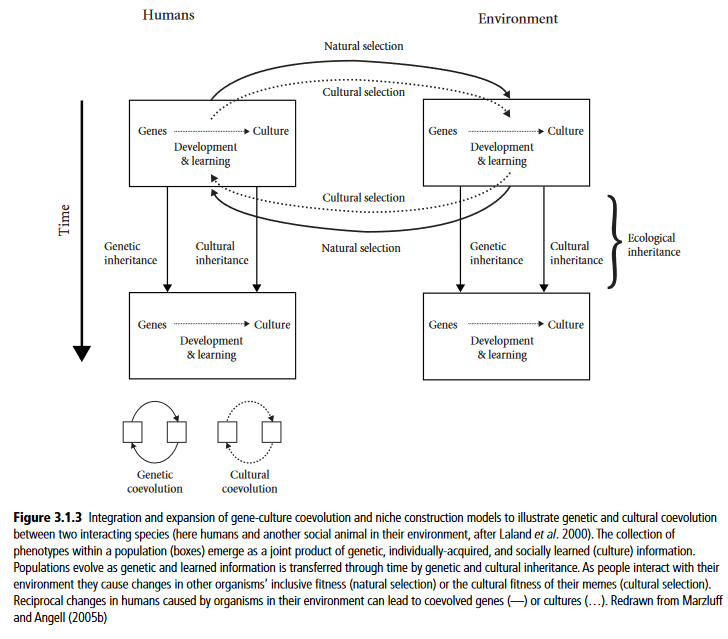
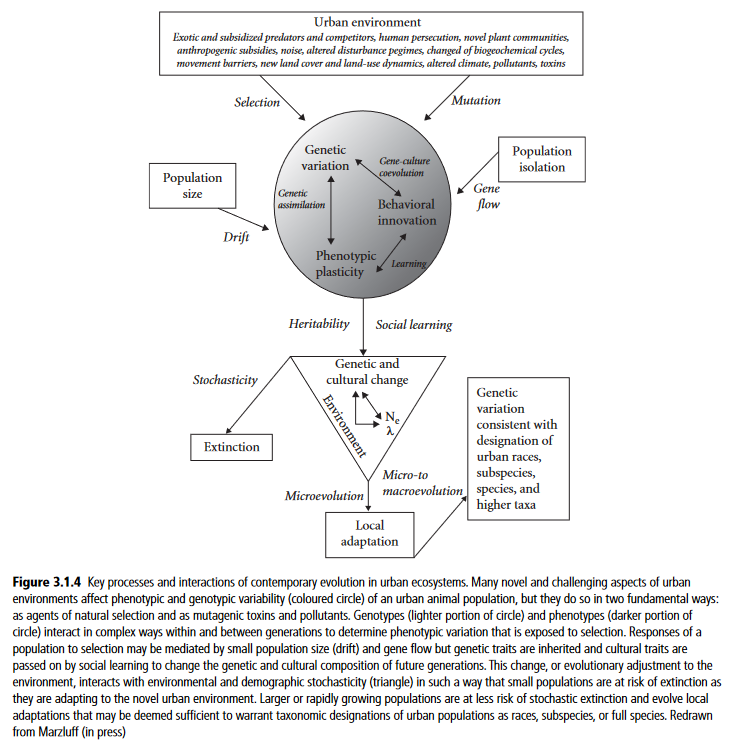
"We suggest that when humans interact with other social species, who themselves have the ability to evolve culture, then simple feedbacks from a culturally evolving ‘environment’ can stimulate rapid cultural evolution in humans."
Niemela, Jari, Jurgen Breuste, Glenn Guntenspergen, Nancy McIntyre, Thomas Elmqvist, and Philip James. Urban Ecology: Patterns, Processes, and Applications. New York, NY, US: Oxford University Press, 2011.
Grether, Gregory F., Kathryn S. Peiman, Joseph A. Tobias, and Beren W. Robinson. “Causes and Consequences of Behavioral Interference between Species.” Trends in Ecology & Evolution 32, no. 10 (2017): 760–72. https://doi.org/10/gnbscx.
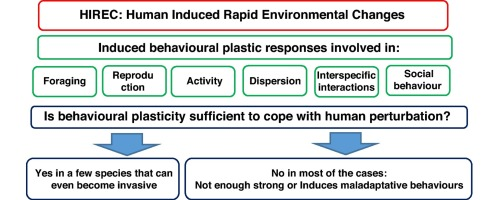
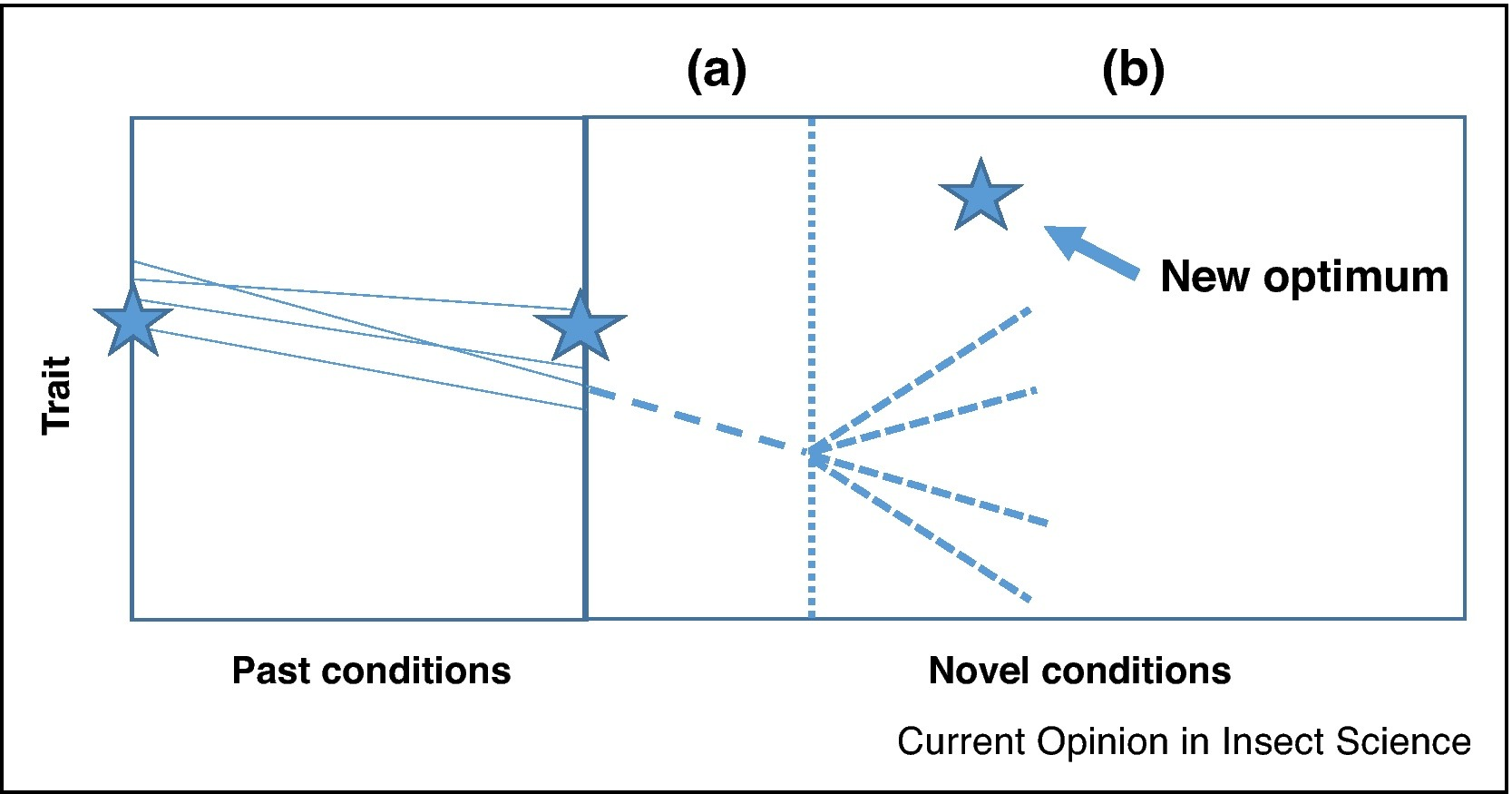
Baaren, Joan van, and Ulrika Candolin. “Plasticity in a Changing World: Behavioural Responses to Human Perturbations.” Current Opinion in Insect Science 27 (2018): 21–25. https://doi.org/10/gdw4qs.
Backlinks